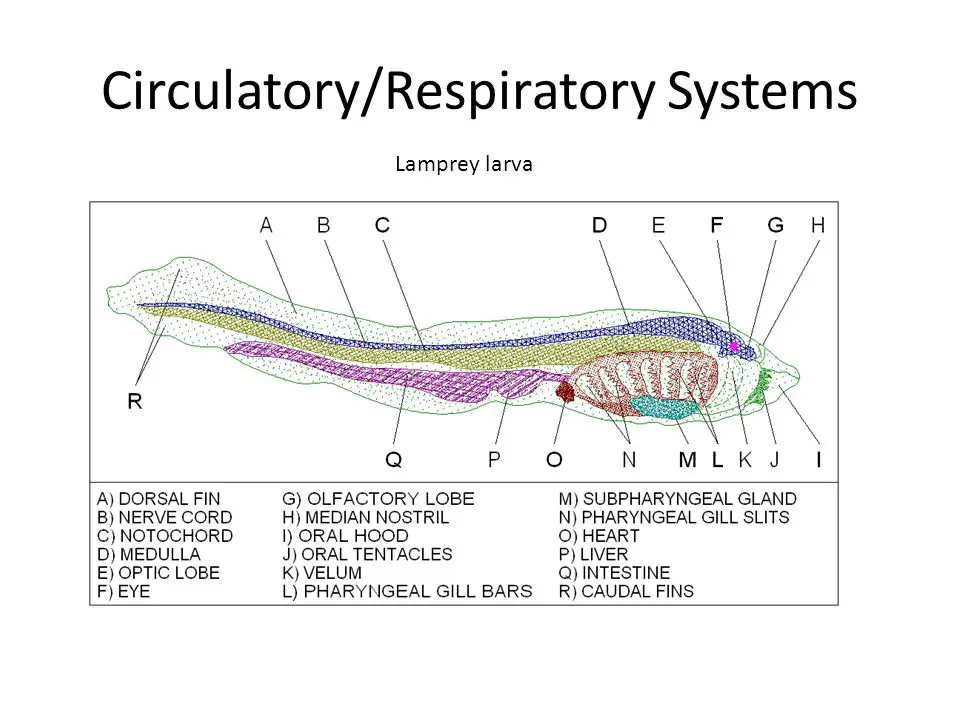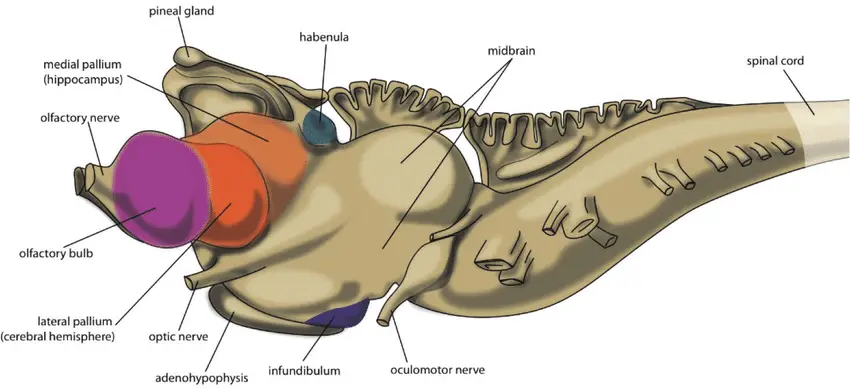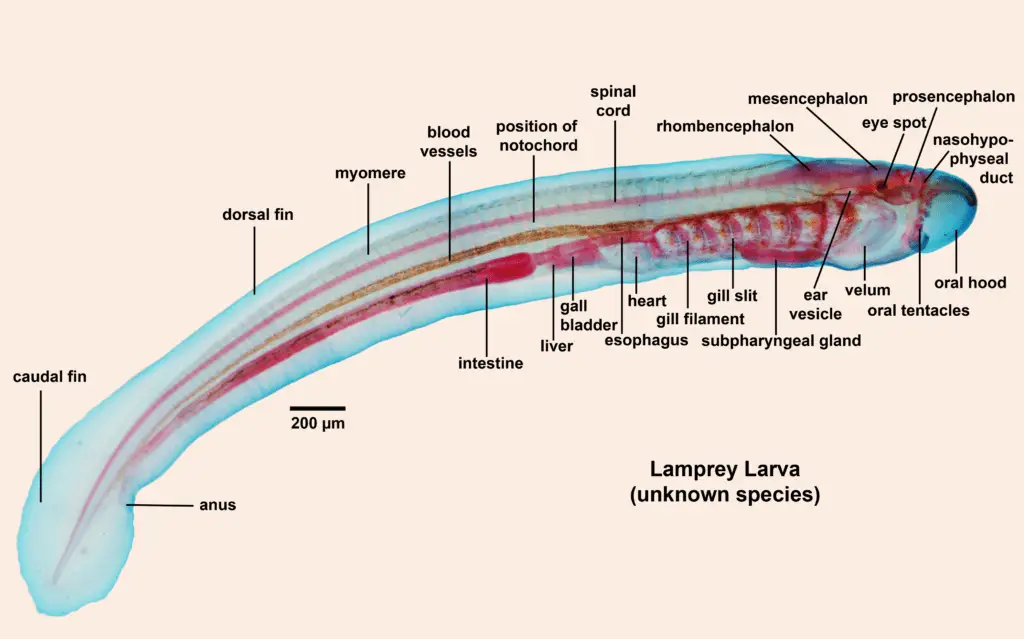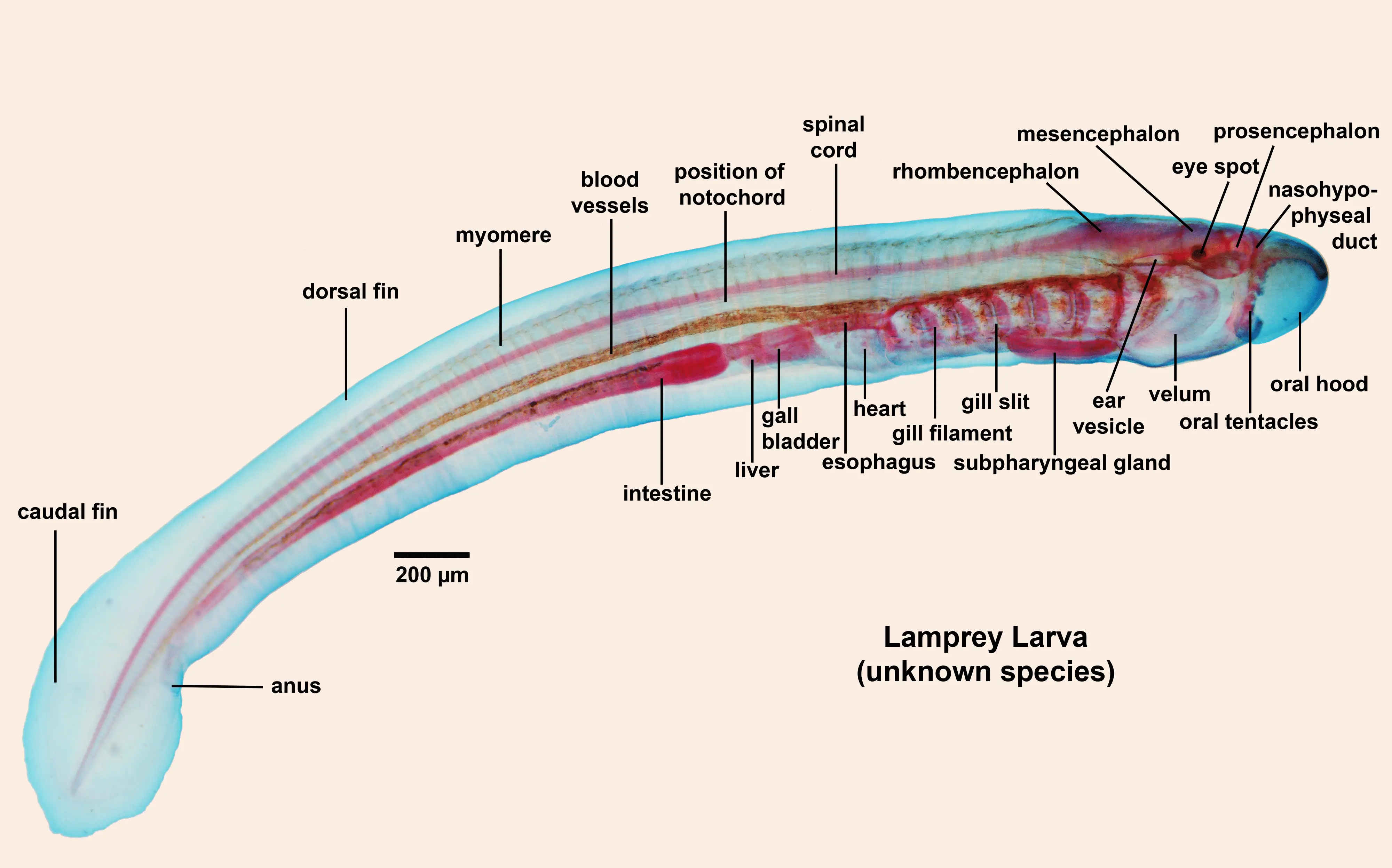The advanced features of Vertebrata present in Cyclostomata point out their ancestry of present-day Vertebrate. But some primitive and peculiar features present in Cyclostomata are very close to the features present in Cephaochordata. These affinities of Cyclostomata with the primitive non-vertebrate show that the Cyclostomata was the primitive ancestors of present-day Vertebrate, especially the Ammocoet larva of Cyclostomata show great similarity with the Cephaochordata and this implies that the Cyclostomata are intermediate between advanced Vertebrate and the primitive Vertebrate.
Table of Contents
Primitive Characteristics of Cyclostomata:

Affinities of Cyclostomata with Cephaochordata:
- In both Cephaochordata and Cyclostomata the dorsal notochord remain throughout the life and the notochord present throughout the length of the body, in case of Cephaochordata the notochord even extend beyond the brain.
- The mouth have no jaw in both Cephaochordata and Cyclostomata, the body is not covered by any endoskeletal structure in both cases.
- The muscle of their lateral side body show segmentation, eact segments are known as myotomes and separated from each other by myocommas, this feature is common in both Cephaochordata and Cyclostomata.
- The alimentary canal is straight and complete, gill slits are numerous.
- The spinal cord have separate dorsal and ventral roots in both Cephaochordata and Cyclostomata.
- The Ammocoet larva of Cyclostomata have fish like appearance and much closer to the Branchiostoma in external appearance.
- The oral hood present in Branchiostoma (Cephaochordata), in Ammocoet larva the ridge like upper lip show great resemblance with the oral hood of Branchiostoma.
- The dorsal fin is continuous in Ammocoet larva and it continues to the upper lobe of caudal fin, the similar fin system also present in Branchiostoma, a Cephaochordata.
- The filter feeding mechanism and the presence of endostyle in pharynx of Ammocoet larva show their close relationship with the Cephaochordata.
Dissimilarity of Cyclostomata with Modern Fishes:
Cyclostomata have a similar external look to fishes but some primitive features present in Cyclostomata separate them from actual fishes.
- In Cyclostomata the mouth do not have jaw but modern fish have jawed mouth, the modern fish have true teeth but the Cyclostomata show epidermal teeth, the alimentary canal of present day fish have stomach which is absent in Cyclostomata.
- In fish the paired appendages present in the form of paired fin but in Cyclostomata all the fin are unpaired and do not supported by true fin rays.
- The diphycercal caudal fin and continuous dorsal fin present in Cyclostomata but it is absent in fish.
- The nostril is single in Cyclostomata but in present day fish the nostril is paired.
- In Cyclostomata the spiral valve present in the intestine but absent in true fishes, the cranium, vertebral column are not well developed in Cyclostomata as compared to true fishes.
- In Cyclostomata the heart is S shape due to small space but the heart is triangular in true fishes.
- The nerve are non myelinated in Cyclostomata but it is myelinated in true fishes, semicircular canals are 1 or 2 but in true fishes the internal ear have 3 semicircular canals.

Affinities of Cyclostomata with Ostracoderms:
Ostracoderms and Cyclostomata both are placed under Group Agnatha, so both Cyclostomata and Ostracoderms show very close resemblance with Cyclostomata.
- Both Cyclostomata and Ostracoderms show jawless mouth, the external nostrils is single in both.
- The median pineal eye and unpaired appendages present in both Ostracoderms and Cyclostomata.
- The gill system of Ostracoderm and Cyclostomata have sac like gill pouches.
- The internal ear have two semicircular canals and lateral line system absent in Ostracoderms and Cyclostomata.
Advanced Features in Cyclostomata:
- The brain in embryonic stage of Cyclostomata is well developed and give out paired cranial nerve.
- The cephalization is clear with paired internal ear and the brain is protected by the cranium.
- From Cyclostomata development of segmental vertebrae start, the spinal cord have separate dorsal root and ventral root.
- The integument have both dermis and epidermis layers, the lateral line organ present for detection of different parameters in the water.
- The developed muscular system in their pharynx create the respiratory cum food water current.
- The gill system have gill pouches which takes part in respiratory gaseous exchange actively.
- The metamerism present in the lateral muscle, the E shaped myotomes are present as that of Vertebrate fish.
- The circulatory system have two chambered contractile heart, blood have hemoglobin rich erythrocytes, white blood corpuscles present, the hepatic portal system present, lymphatic system also present and primary excretory organ is paired mesonephric kidneys.
Specialized Features of Cyclostomata:
The adult Cyclostomes and their larval stage show very strong dissimilarity, the adult Cyclostomes have some degenerate features as compared to their larva while in the adult stage some features are very advanced.
- The adult Cyclostomes are mostly parasite on other fishes, so they show some adaptation for parasitism, for example the suctorial buccal funnel help Petromyzon to get attached to the body of prey fish.
- The tongue bear horny teeth which they use for biting the flesh on the body of the fishes from where they suck the blood or body fluids of the victim fish.
- Buccal cavity have opening of salivary gland, the secretion of the salivary gland have anticoagulant which prevents the coagulation of body fluids during sucking the body fluids.
- The presence of gill in gill pouches and the separate respiratory pharynx separated from the main food tract or esophagus help them continue their respiration during their attachment to the body of prey fishes.
Degenerate Characteristics of Cyclostomata:
- The body is eel like elongated and slimy but there are no exoskeleton or scales on their body.
- The endosketon present in Cyclostomata are all made of cartilaginous tissues, there are no bony endosketon or exoskeleton in their body.
- In some Cyclostomes, for example in Hagfish the lateral eyes are covered by the skin and muscle so they are vestigial.
- In larval stage the Cyclostomata have gall bladder and bile duct but in adult stage the gall bladder and bile duct remain absent.

Reference Cyclostomata General Characteristics Features Classifications Systematic Position Affinities
Detailed Study On
Classification of Cyclostomata
Characteristics Features of Cyclostomata
Economic Importance of Petromyzon
Nervous System and Excretory System of Petromyzon
Respiratory System and Circulatory System of Petromyzon
Digestive System and Feeding Mechanism of Petromyzon
Anatomy of Petromyzon (Lamprey)
Hi Everyone!!! Welcome to Imaluop. Imaluop always try to learn some new and he want to share to other people. Here we will try to learn various topics on Science, specially on Biological Sciences.
